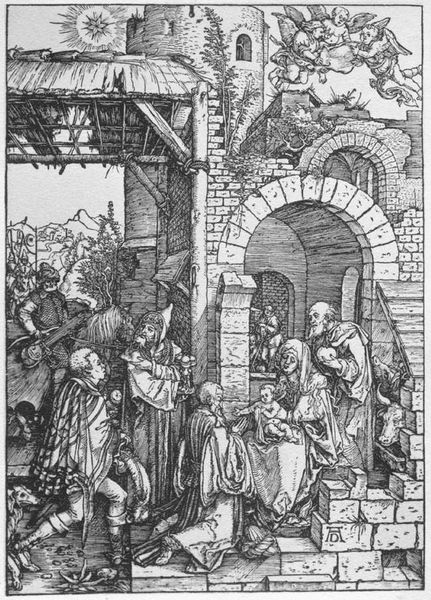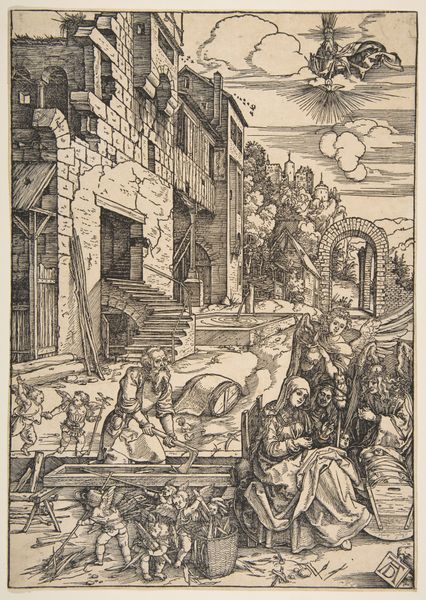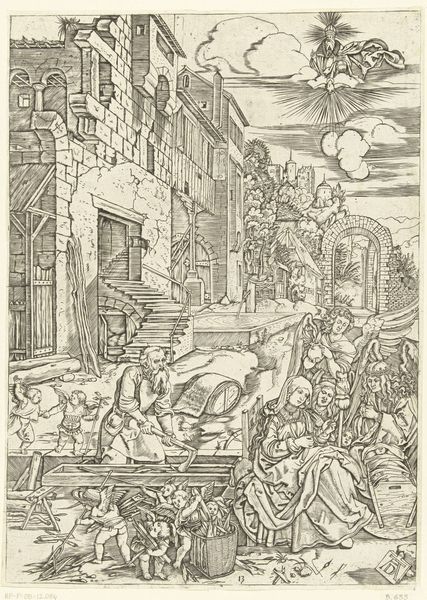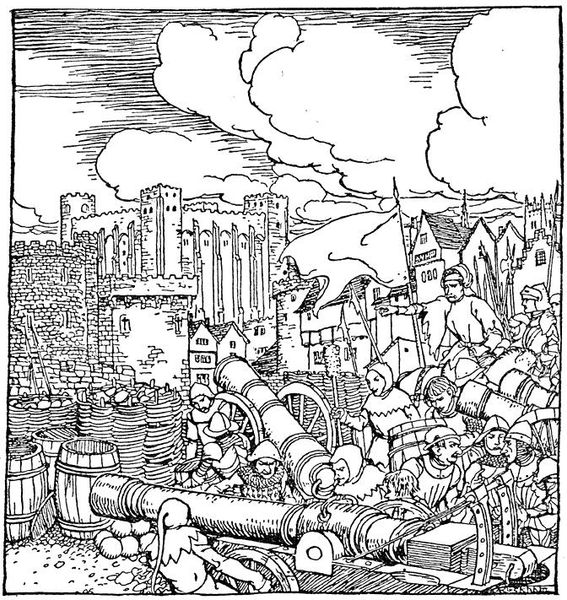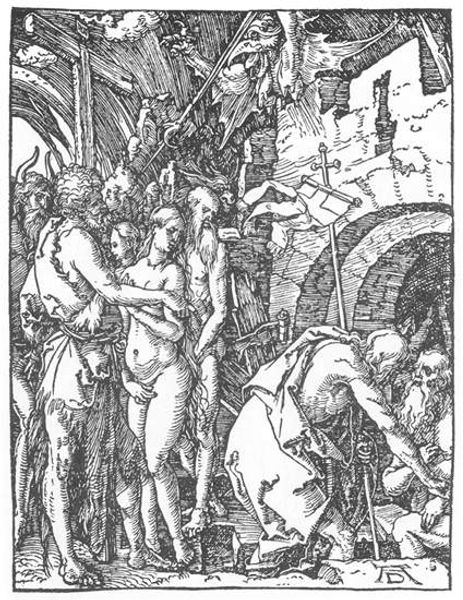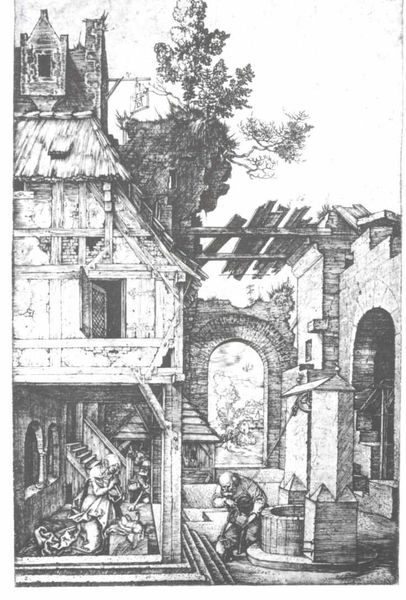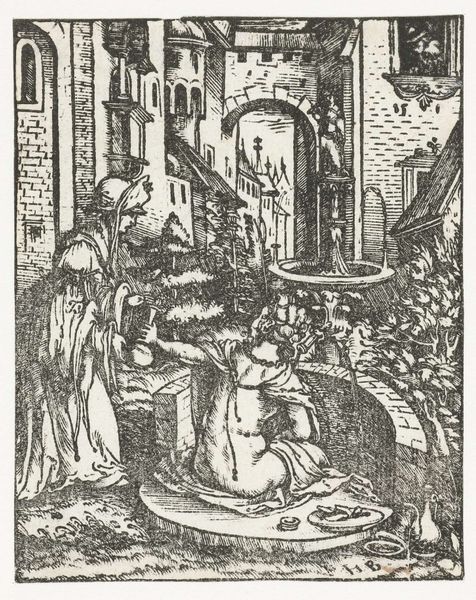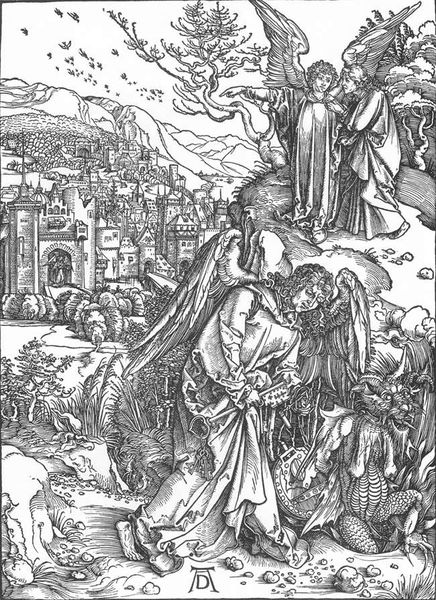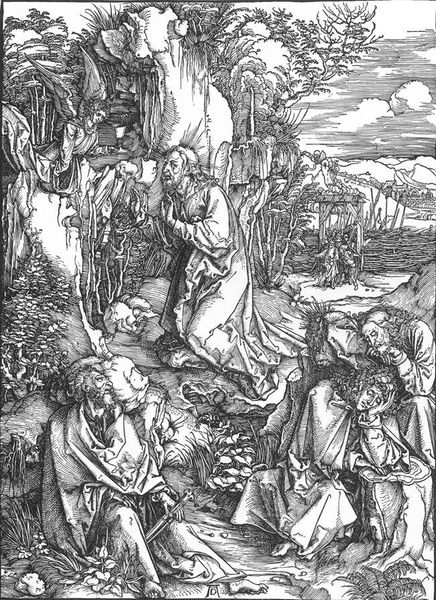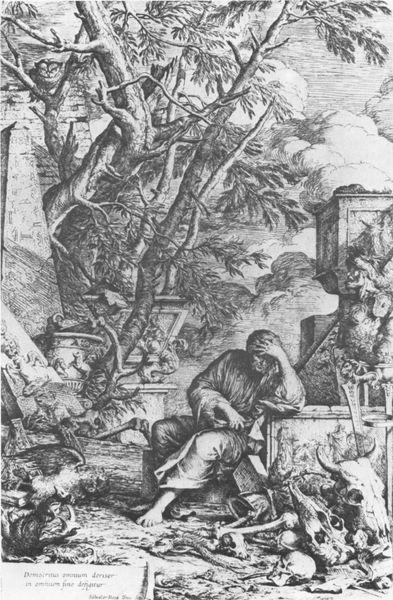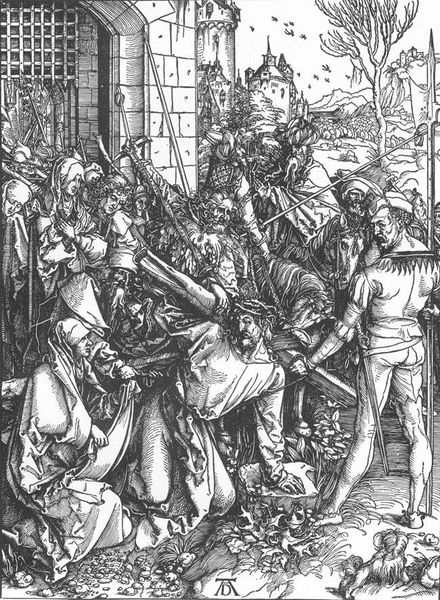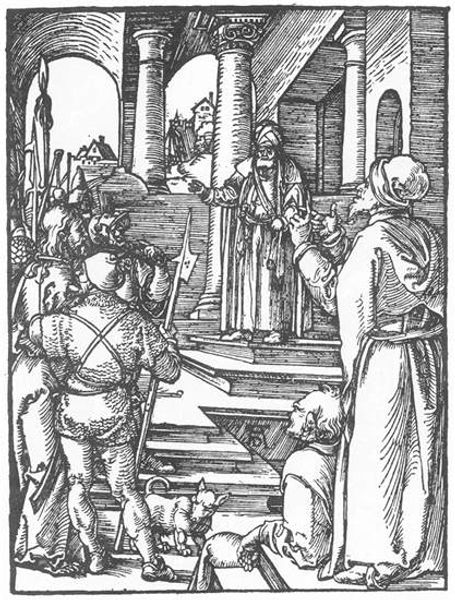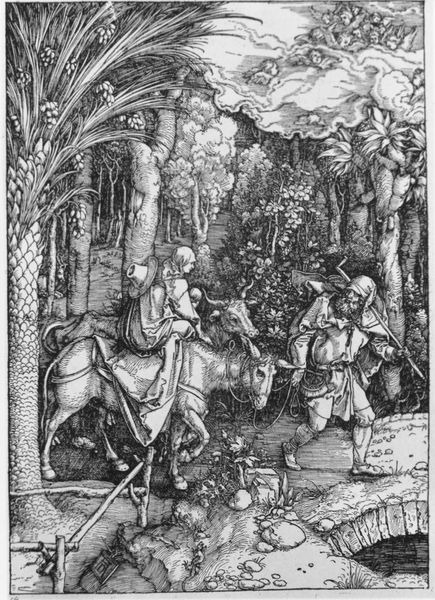
print, woodcut, engraving
# print
#
landscape
#
woodcut
#
christianity
#
history-painting
#
northern-renaissance
#
engraving
#
virgin-mary
#
angel
#
christ
Copyright: Public domain
Curator: Let’s consider Albrecht Dürer’s woodcut, "The Rest during the Flight to Egypt," created around 1505. Its detailed linework is immediately striking. Editor: It's bustling. Not the serene respite I'd expect, but an almost chaotic depiction of rest. Look at the angels busy with work. The materiality feels raw, unfinished somehow. Curator: The composition certainly deviates from traditional representations. Note how the landscape itself—the architecture, the distant cityscape—takes center stage. This Northern Renaissance style favors detail, yes, but also a certain emotional intensity conveyed through form. Editor: Indeed, it highlights labor and domesticity. We have angels pumping water and even little putti acting like miniature laborers; it is more suggestive of collaborative construction rather than celestial visitation, upending the expectations of religious iconography. It all appears as this intricate, tangible scene filled with human and divine action, linked via labour. Curator: Precisely. Dürer uses the woodcut medium to its full potential here. The varying line weights create a sense of depth and texture, inviting the viewer to decipher symbolic meaning through the careful structuring of the visual plane. Observe the contrast between the sacred figures and the ordinary structures; an exploration of divine intervention amidst daily routines. Editor: And I cannot unsee these very human-like depictions, made tangible by the stark reality of labor; one considers the tools, the process of carving the block itself, the labour it would take. The medium becomes message, foregrounding this very act of creation to re-cast it within art historical significance. Curator: Perhaps then, in bringing both the earthly and divine realms to this detailed image, Dürer seeks a unification that transcends simple narrative. It invites a complex and multifaceted approach. Editor: Right. By grounding the holy family in labor, Dürer challenges established notions of religious painting to elevate production—human and divine alike. It is about the process itself as an object of cultural value, in ways that subvert typical approaches to history.
Comments
No comments
Be the first to comment and join the conversation on the ultimate creative platform.
